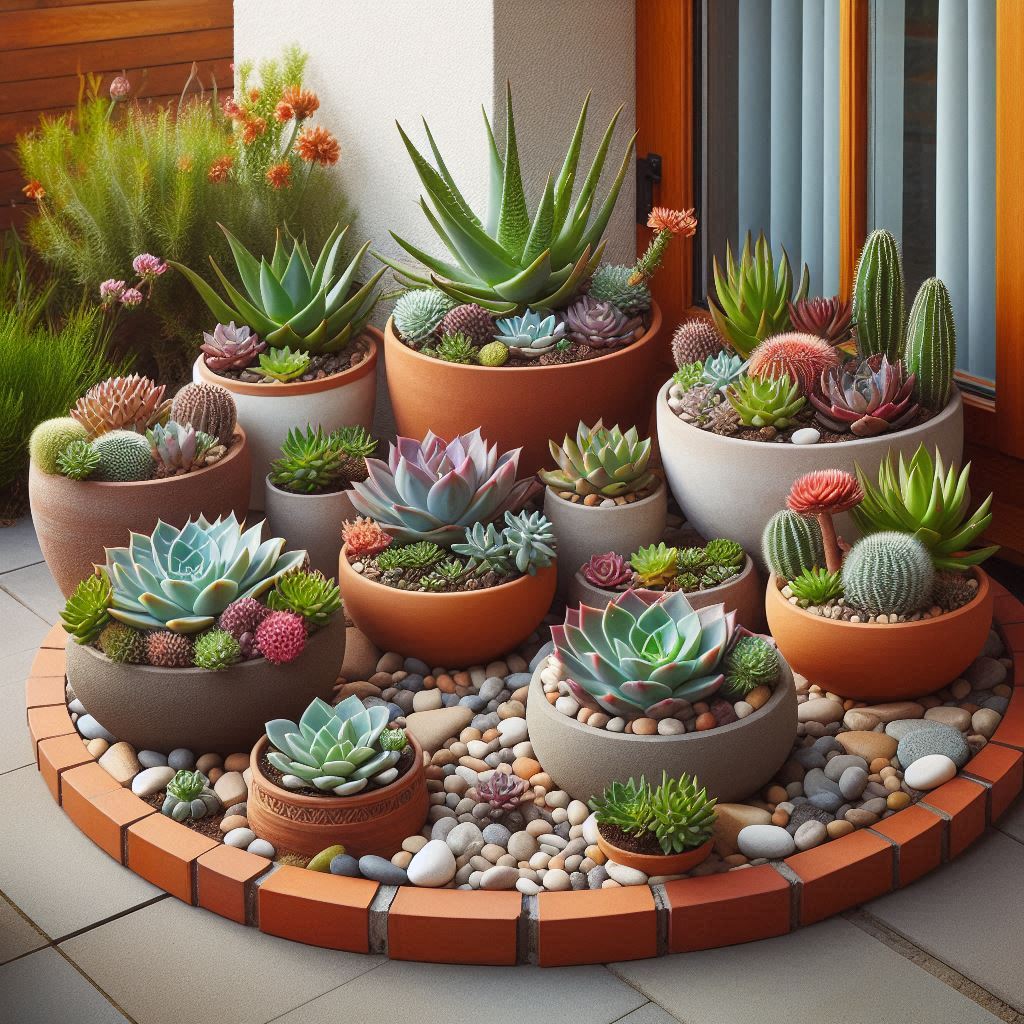Succulents have taken the gardening world by storm. Their captivating textures, diverse shapes, and stunning range of colors make them a versatile choice for any garden. But their popularity goes beyond aesthetics. Succulents are incredibly low-maintenance plants, thriving on neglect and minimal water. This makes them perfect for busy gardeners or those living in hot, dry climates.
Drought-tolerant container gardens offer a multitude of benefits. They require less frequent watering, saving you time and water. They’re ideal for small balconies, patios, or sunny entrances, bringing life to any space. Plus, with the right plant combinations, you can create stunning displays that are both beautiful and resilient.
This guide will introduce you to 18 fantastic succulent varieties perfect for container plantings, along with design tips to bring your drought-tolerant dreams to life.
18 Container Plant Ideas for Drought-Tolerant Gardens
1. Aeonium Arboreum (Tree Aeonium):

This architectural wonder lives up to its name, boasting a rosette of thick, fleshy leaves that spiral around a central stem, eventually forming a miniature tree-like structure. Aeonium arboreum comes in various shades of green, with some varieties boasting reddish or purple edges. It thrives in full sun and well-draining soil.
- Design Ideas: For a dramatic centerpiece, plant a single Aeonium arboreum in a terracotta pot. Surround it with colorful gravel or creeping sedum for added texture and contrast. Alternatively, pair it with trailing succulents like string of pearls or burro’s tail for a cascading effect.
2. Aloe Vera:

Beyond its medicinal properties, Aloe vera is a stunning succulent with broad, sword-shaped leaves that range from light green to blue-green. The mature plant produces vibrant yellow flowers during the summer months. Aloe vera prefers full sun and well-draining soil.
- Design Ideas: Aloe vera’s upright form makes it a perfect choice for adding height to container arrangements. Combine it with low-growing succulents like echeveria or haworthia for a layered effect. For a touch of whimsy, plant aloe vera in a quirky container shaped like a watering can or animal.
3. Crassula Ovata (Jade Plant):

A symbol of good luck and prosperity in many cultures, the jade plant is a popular choice for container gardens. It features plump, oval-shaped leaves that turn a reddish hue with ample sunlight. Jade plants can grow quite large over time, making them excellent candidates for floor containers. They thrive in full to partial sun and well-draining soil.
- Design Ideas: The jade plant’s classic beauty allows it to shine as a standalone specimen in a decorative pot. However, it also complements other succulents beautifully. Pair it with trailing varieties like string of buttons or string of dolphins for a cascading effect.
4. Echeveria (Hen and Chicks):
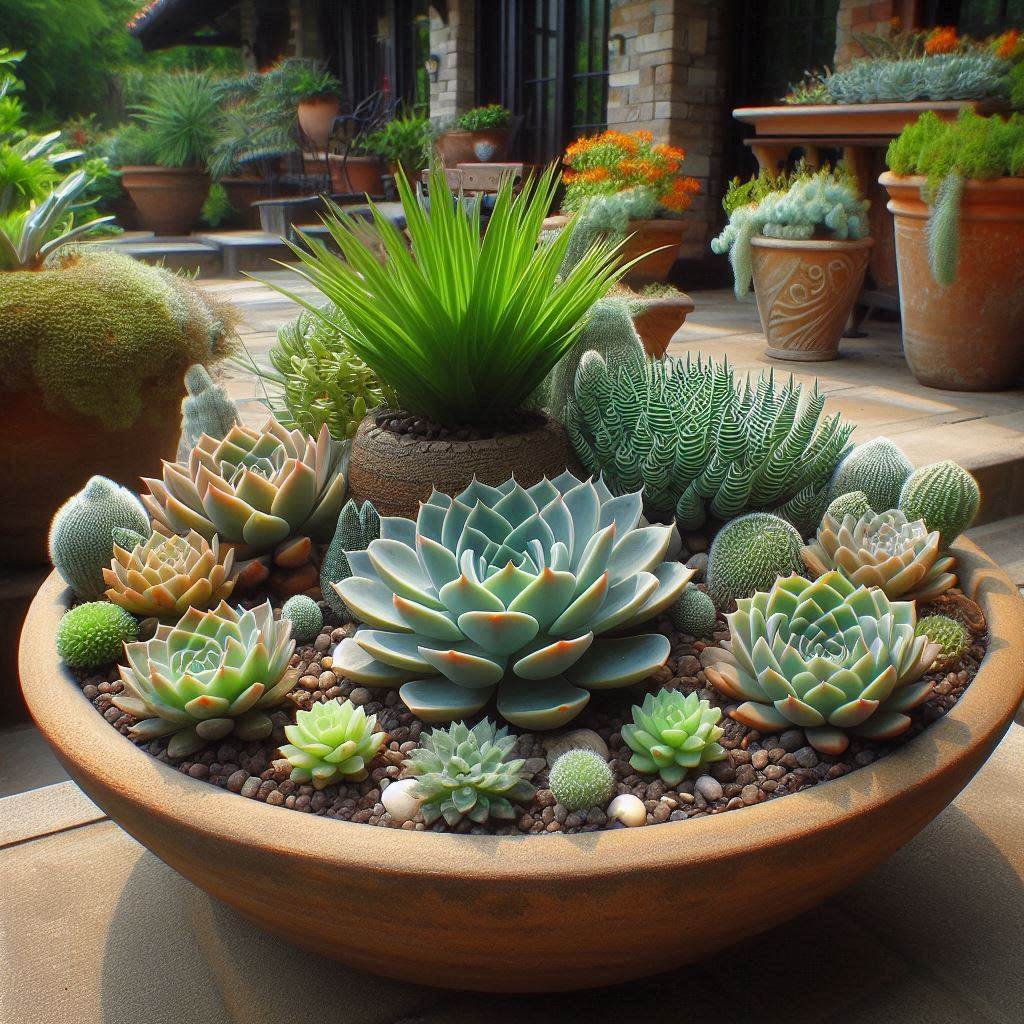
Echeveria is a vast genus of succulents with an incredible variety of shapes, sizes, and colors. The most common characteristic is the rosette formation, where fleshy leaves spiral outwards from a central stem. Colors range from classic green and blue to vibrant orange, pink, and purple. Echeveria thrives in full sun and well-draining soil.
- Design Ideas: Echeveria’s diverse aesthetics allow for endless design possibilities. Create a rainbow effect by planting a collection of echeveria with various colored rosettes in a single container. Alternatively, use echeveria with contrasting textures – like smooth and fuzzy varieties – for added visual interest.
5. Haworthia:
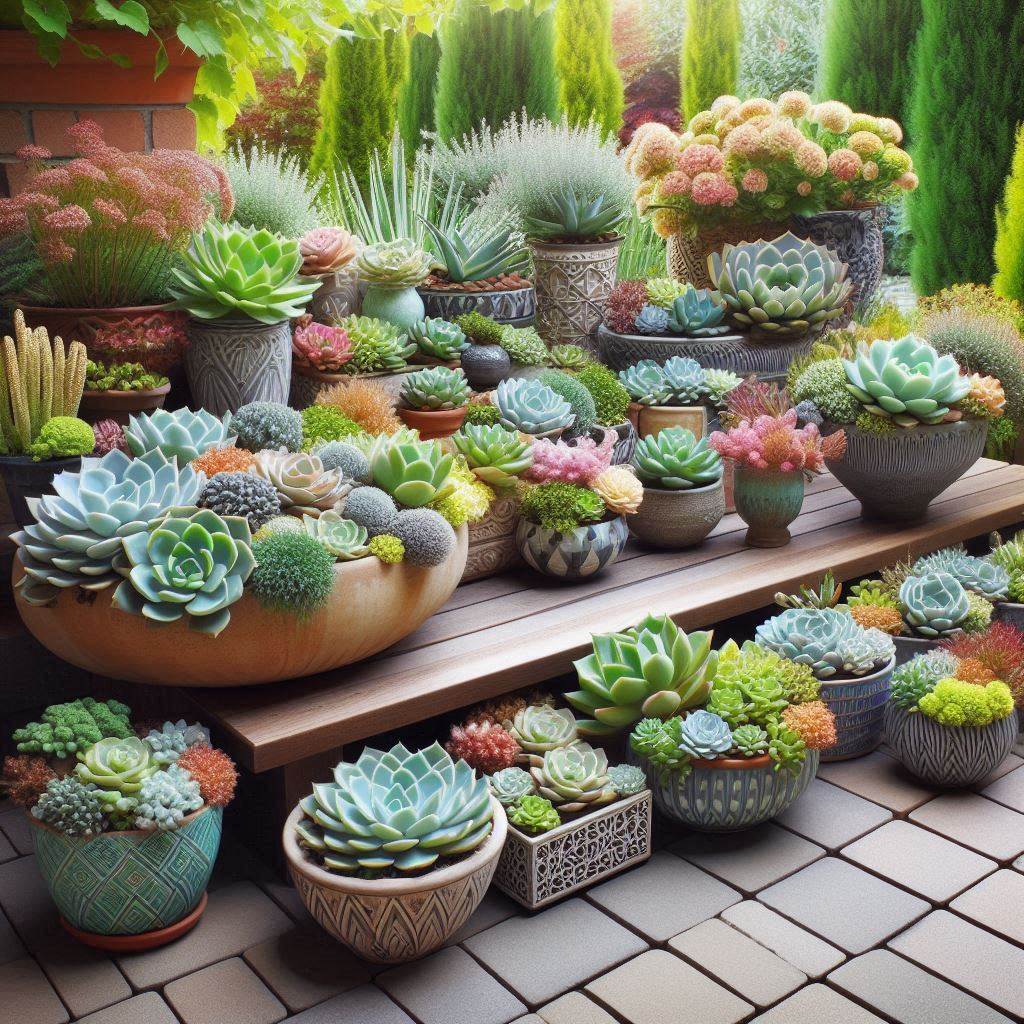
These low-growing succulents are known for their unique, textured leaves with zebra-like stripes or pearl-like bumps. Haworthia thrives in partial shade and well-draining soil, making them a perfect choice for container gardens placed under a covered patio or near shady trees.
- Design Ideas: Haworthia’s compact size makes them ideal for terrariums or dish gardens. Combine them with other shade-loving succulents like gasteria or cryptanthus for a miniature world within a container. Haworthia can also be planted alongside colorful gravel or moss for a natural, whimsical aesthetic.
6. Sedum (Stonecrop):
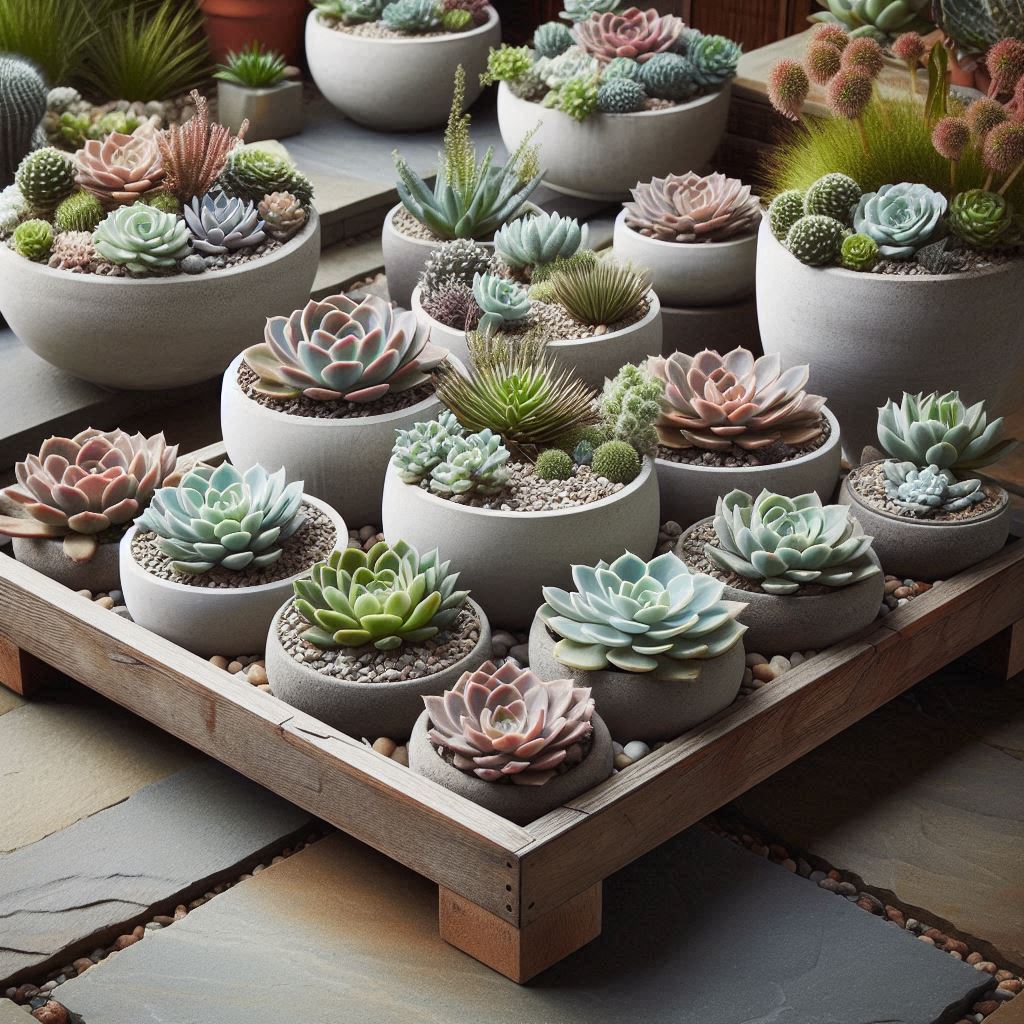
Sedum is a diverse group of succulents with a wide range of foliage types and growth habits. Some varieties form low-growing mats, while others boast upright, fleshy stems. Sedum comes in various shades of green, blue, and even burgundy. Most varieties thrive in full sun and well-draining soil.
- Design Ideas: Sedum’s versatility allows it to play many roles in container gardens. Trail over the edges of containers, creating a cascading effect. Upright varieties like Sedum spectabile (Autumn Joy) can add height and structure to arrangements. Sedum’s succulent leaves also pair beautifully with flowering succulents like kalanchoe for a vibrant display.
7. Sempervivum (Hens and Chicks):
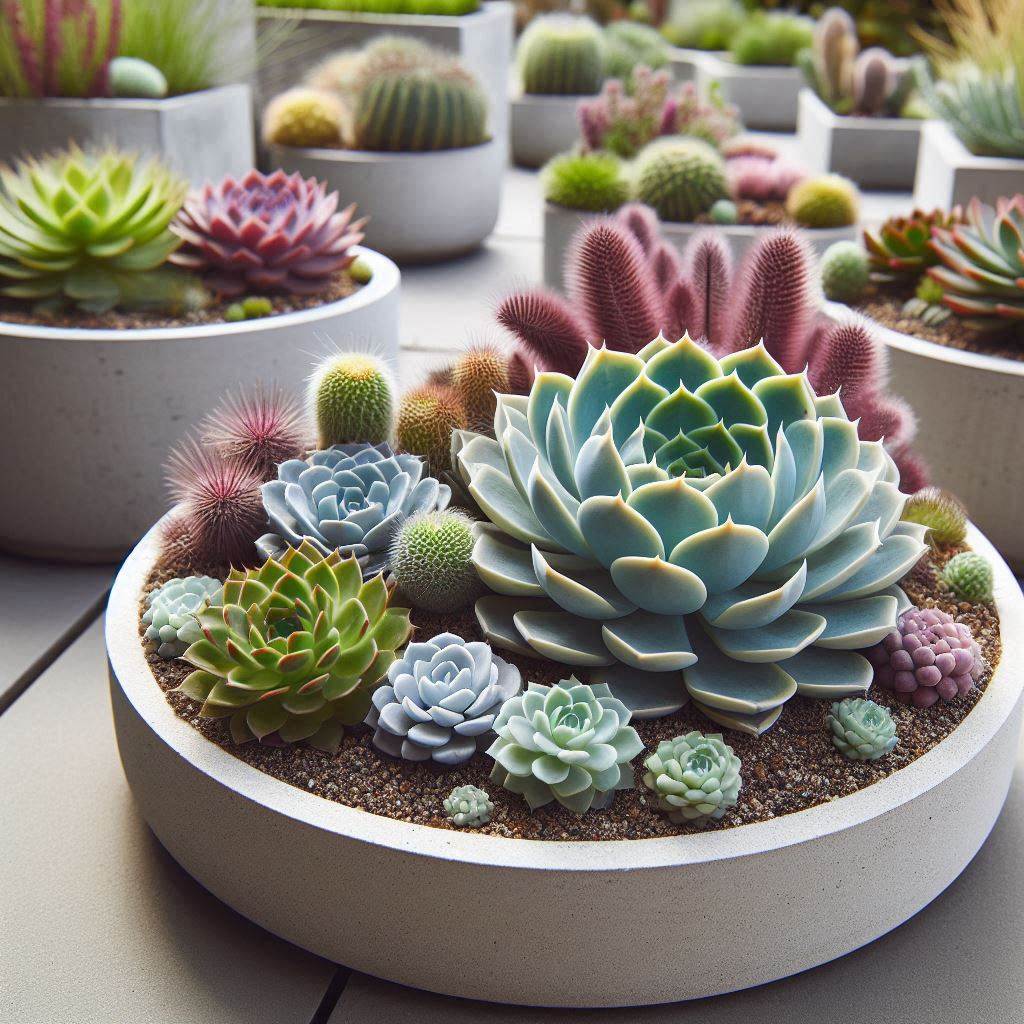
Sempervivum, also known as hens and chicks, are cold-hardy succulents that form tight clusters of fleshy leaves. The “hens” are mature rosettes, while the “chicks” are smaller offshoots that grow around the base. Sempervivum comes in a variety of colors, including green, red, purple, and even black. They thrive in full sun and well-draining soil.
Design Ideas: Sempervivum’s compact size and clumping form make them ideal for rock gardens or small container plantings. Plant them in a shallow dish garden or a terracotta pot with drainage holes. Their vibrant colors allow for creative design possibilities. Create a geometric pattern by planting different colored varieties in a grid-like fashion. Alternatively, use sempervivum to add pops of color to a container filled with primarily green succulents.
8. Graptoveria:
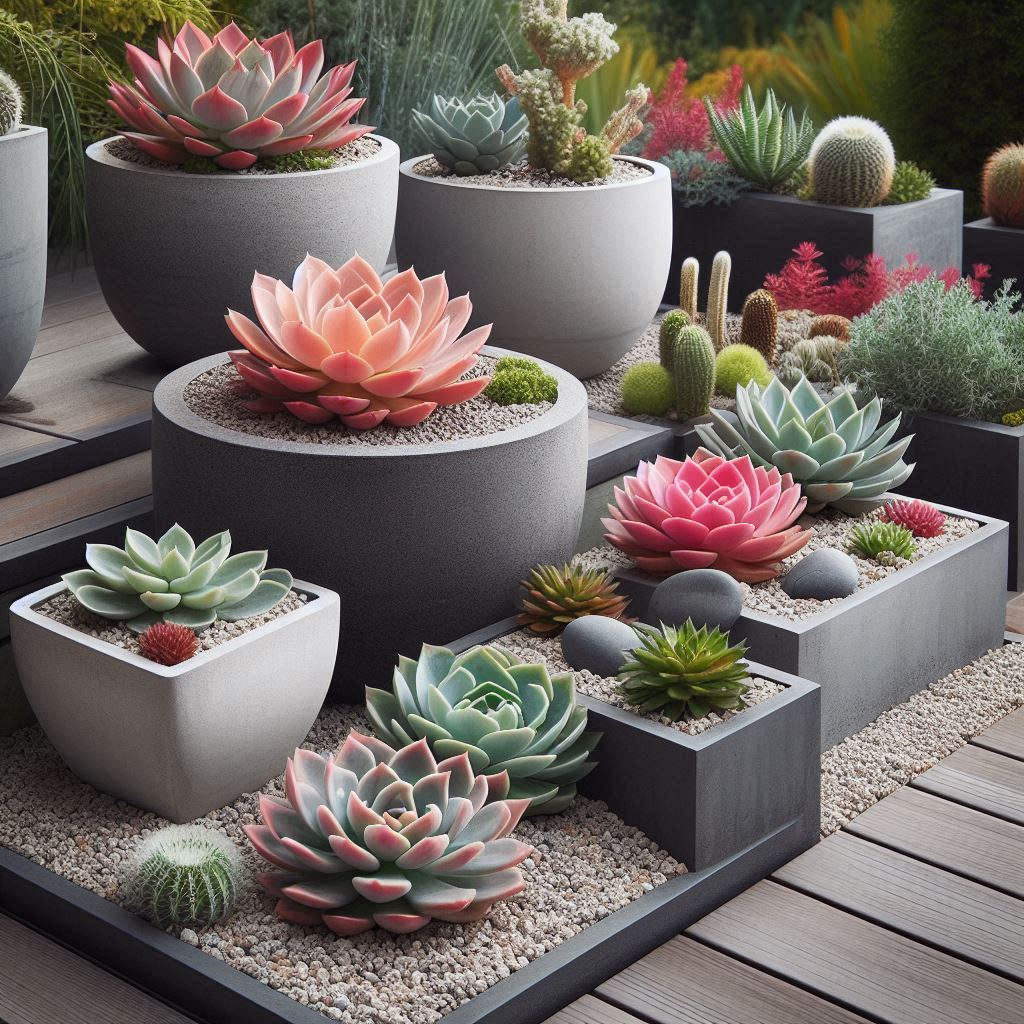
This captivating hybrid combines the beauty of Graptopetalum and Echeveria, resulting in stunning rosettes with plump, colorful leaves. Graptoveria thrives in full sun and well-draining soil.
- Design Ideas: Graptoveria’s vibrant hues make them a focal point in container arrangements. Pair them with contrasting colored succulents like blue echeveria or haworthia for a striking display. Alternatively, plant a collection of graptoveria with different colored rosettes in a single container for a mesmerizing rainbow effect.
9. Living Stones (Lithops):
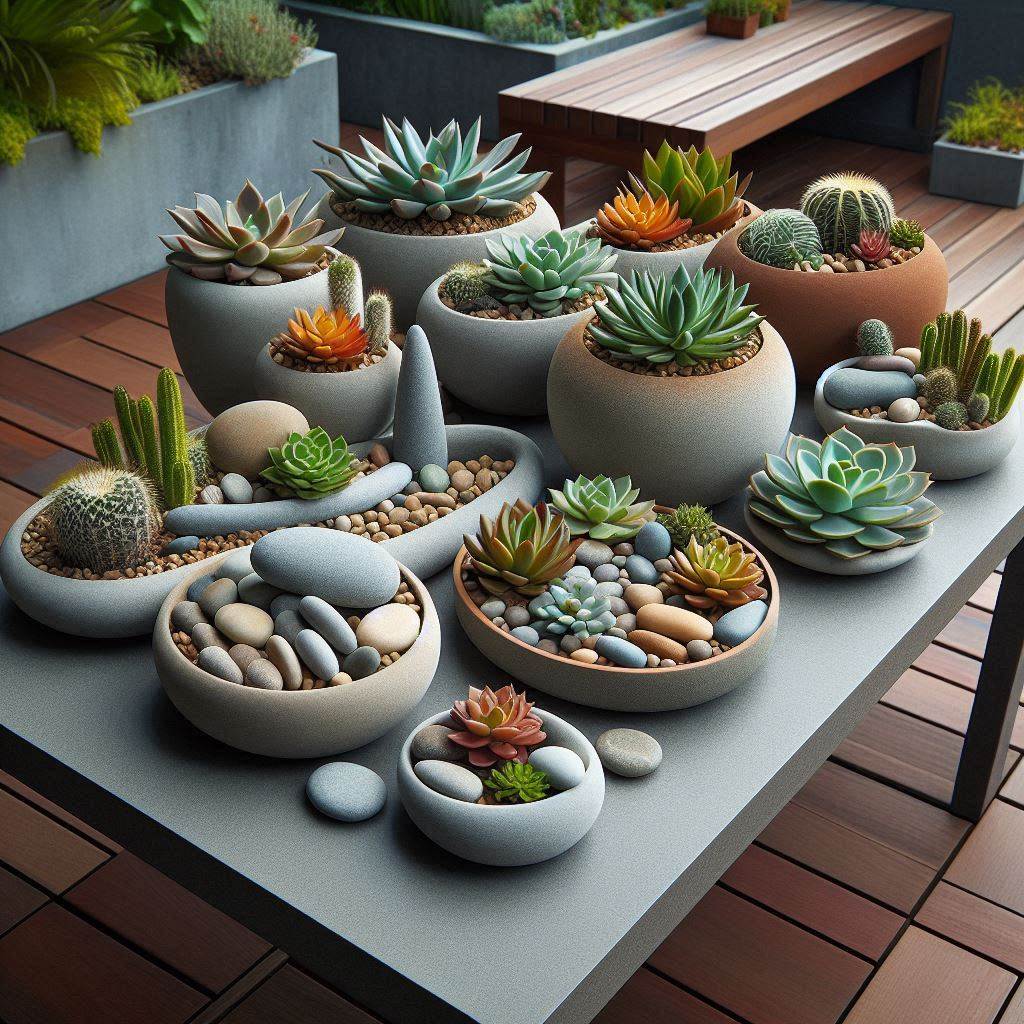
These unique succulents resemble small, smooth pebbles with a slit running down the center. Living stones come in various earthy tones with interesting markings and textures. They thrive in full sun and require very infrequent watering.
- Design Ideas: Living stones are perfect for creating miniature landscapes in shallow containers. Plant them in a bed of sand or gravel, mimicking their natural desert habitat. Combine them with other small succulents like sempervivum or haworthia for added visual interest.
10. String of Pearls (Senecio Rowleyanus):
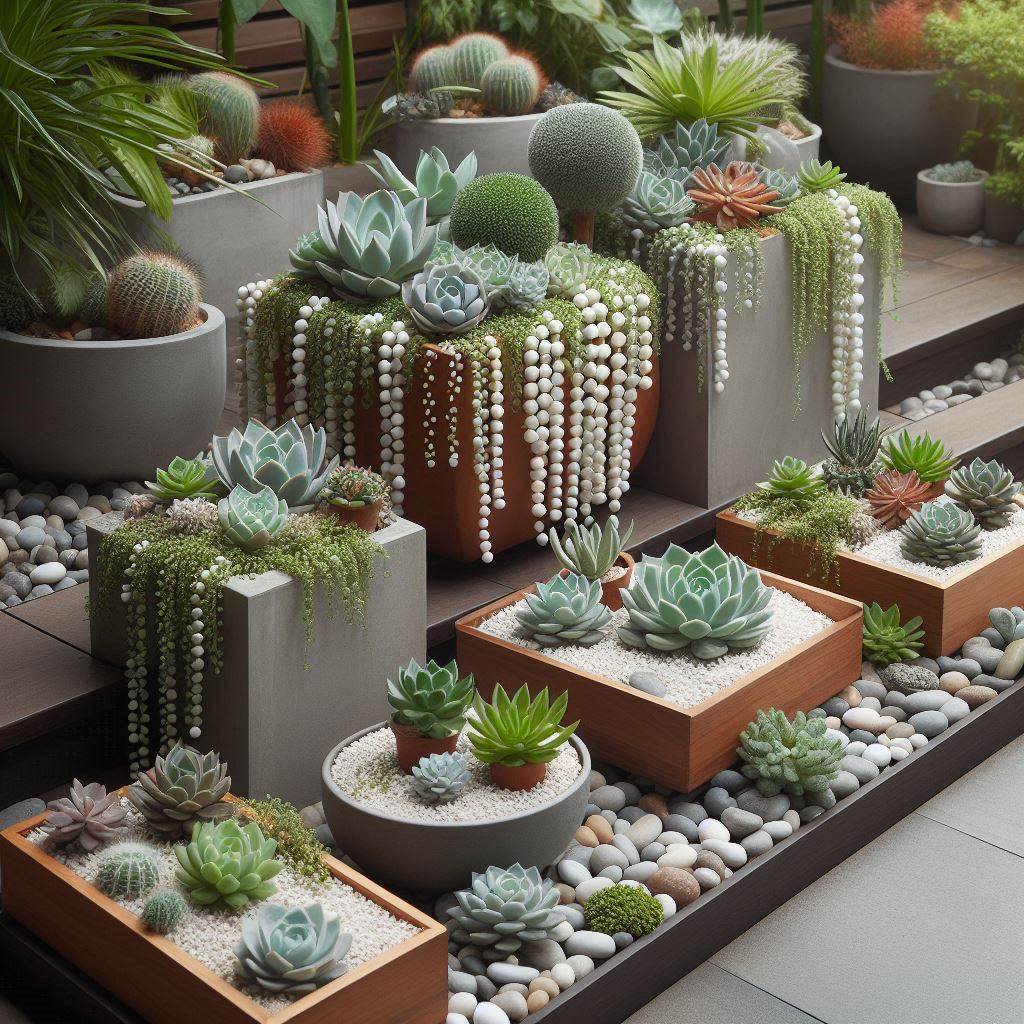
This cascading succulent features long, slender stems adorned with pea-sized, pearl-like leaves. String of pearls thrives in bright, indirect sunlight and well-draining soil.
- Design Ideas: String of pearls truly shines in hanging baskets or containers placed on high shelves. Their cascading vines create a lush, waterfall effect. Pair them with upright succulents like echeveria or crassula for a dynamic contrast in textures and growth habits.
11. String of Bananas (Senecio Herrianus):

A close relative of the string of pearls, the string of bananas boasts plump, cylindrical leaves that resemble miniature bananas. This succulent thrives in bright, indirect sunlight and well-draining soil.
- Design Ideas: Similar to the string of pearls, string of bananas is ideal for hanging containers or elevated planters. Their unique foliage adds a whimsical touch to any arrangement. Combine them with trailing succulents like burro’s tail or string of hearts for a lush, cascading display.
12. Zebra Haworthia (Haworthia Fasciata):
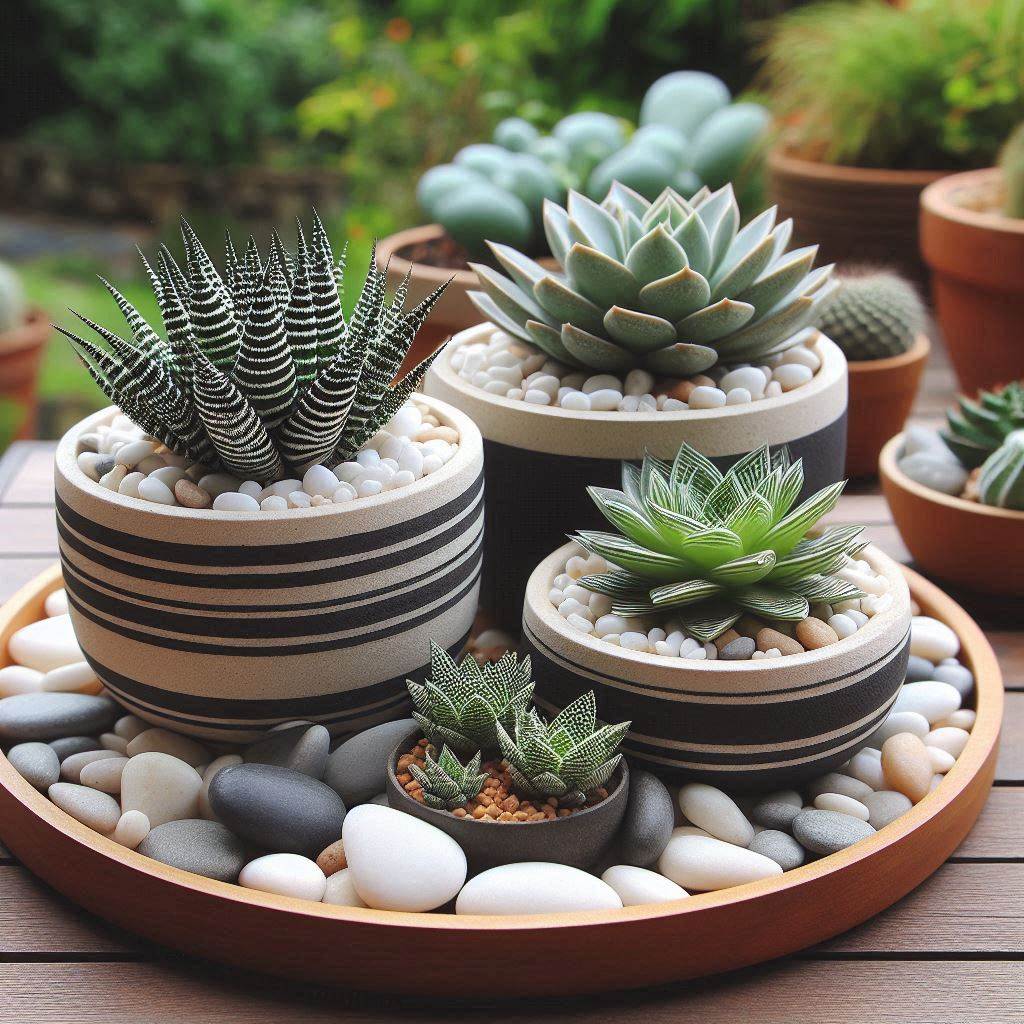
This captivating haworthia variety features plump, triangular leaves adorned with horizontal stripes resembling zebra markings. Zebra haworthia thrives in partial shade and well-draining soil.
- Design Ideas: Zebra haworthia’s unique markings make them a conversation starter in any container garden. Plant them alongside other textured succulents like fuzzy echeveria or bumpy gasteria for a visually stimulating display. Alternatively, use them as an accent plant in a container filled with primarily green succulents.
13. Kalanchoe (Flaming Katy):
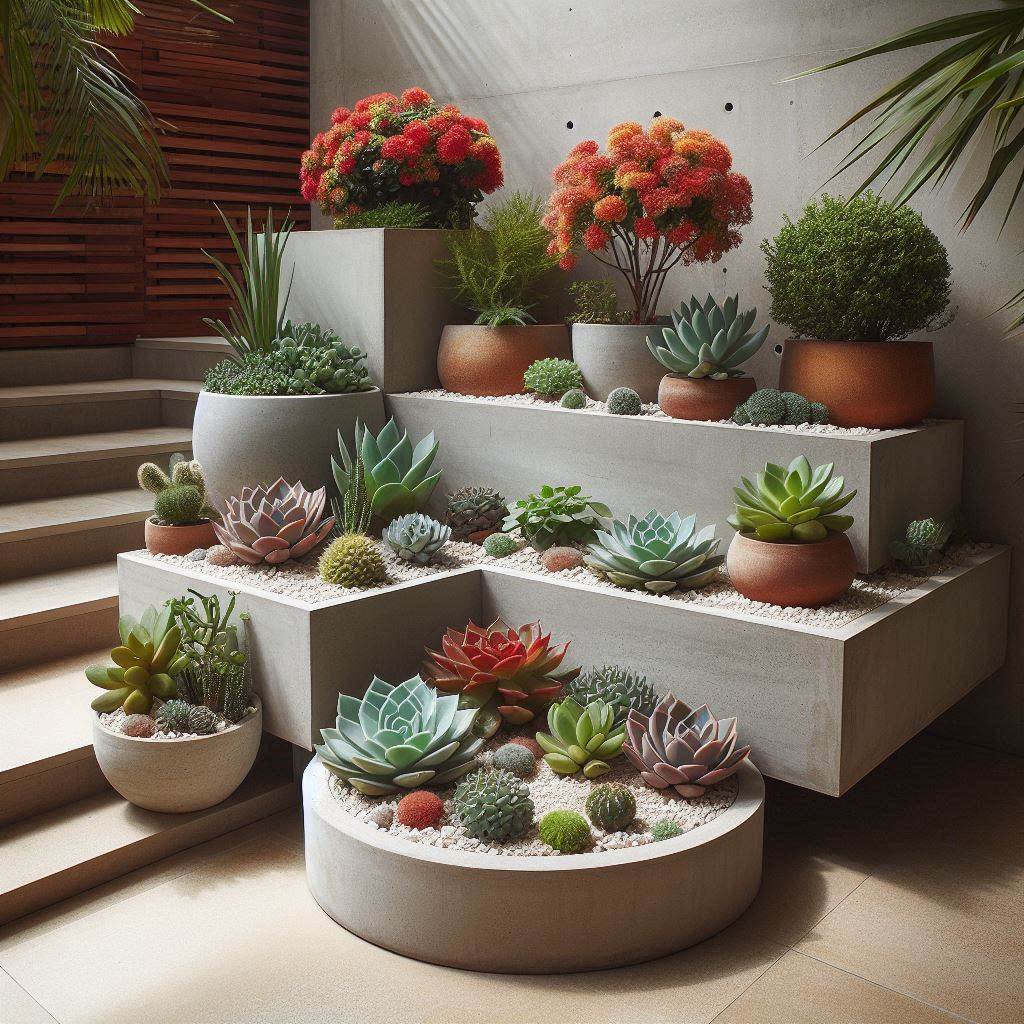
While most succulents are known for their foliage, kalanchoe offers vibrant blooms in addition to attractive leaves. Flowering varieties like Kalanchoe blossfeldiana come in a range of colors, including red, orange, yellow, and pink. Kalanchoe thrives in full sun to partial shade and well-draining soil.
- Design Ideas: Kalanchoe’s vibrant flowers add a burst of color to drought-tolerant container gardens. Pair them with succulents that boast interesting foliage textures, like fuzzy crassula or bumpy haworthia, for a visually captivating combination. Kalanchoe can also be planted alongside other flowering succulents like sedum spectabile for a truly colorful display.
14. Yucca (Spineless Yucca):
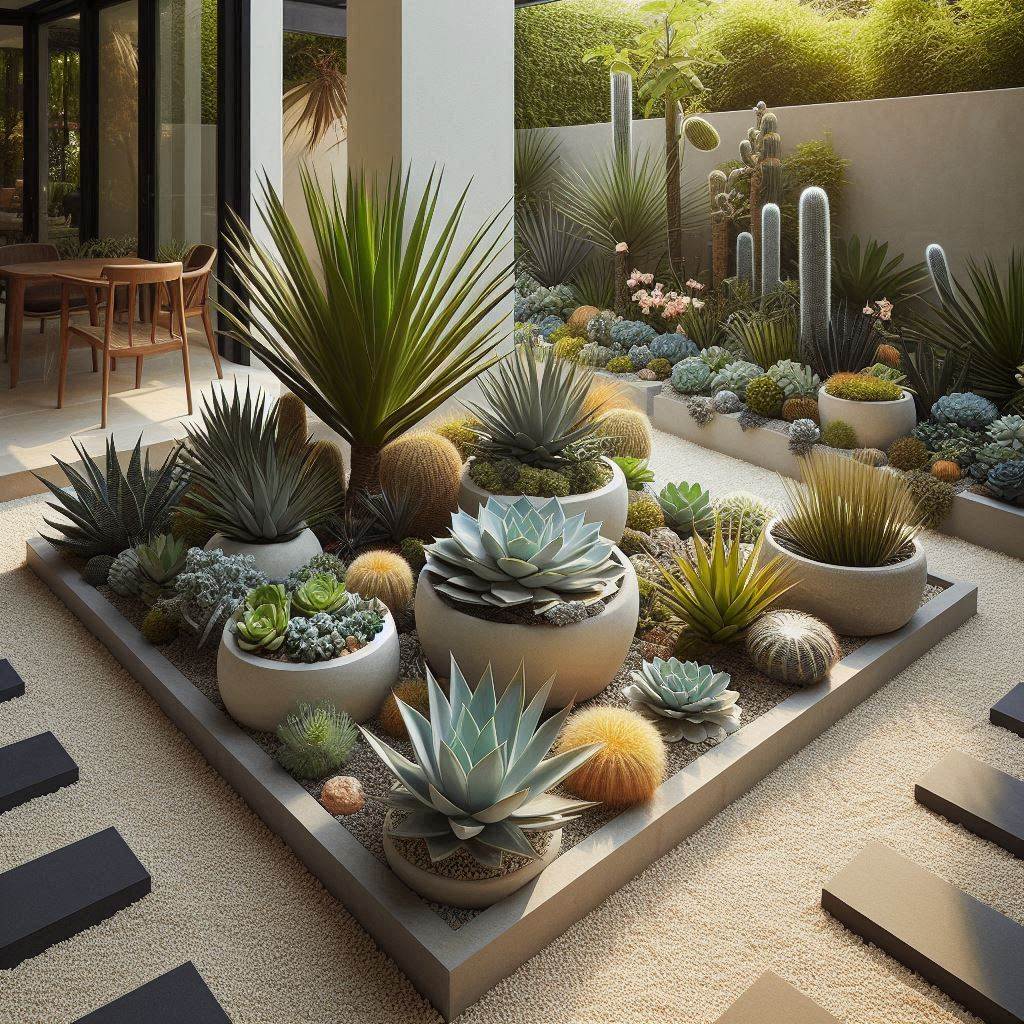
For a touch of drama and added height in your container garden, consider the spineless yucca. This succulent features sword-like, evergreen leaves with smooth or slightly serrated edges. Spineless yucca thrives in full sun and well-draining soil.
- Design Ideas: The architectural form of the spineless yucca makes it a stunning focal point in large containers. Balance its vertical presence with lower-growing succulents like echeveria or sedum for a well-proportioned arrangement. Alternatively, plant a single spineless yucca in a decorative pot for a dramatic statement piece.
15. Corpuscularia Lehmania (Living Coral):
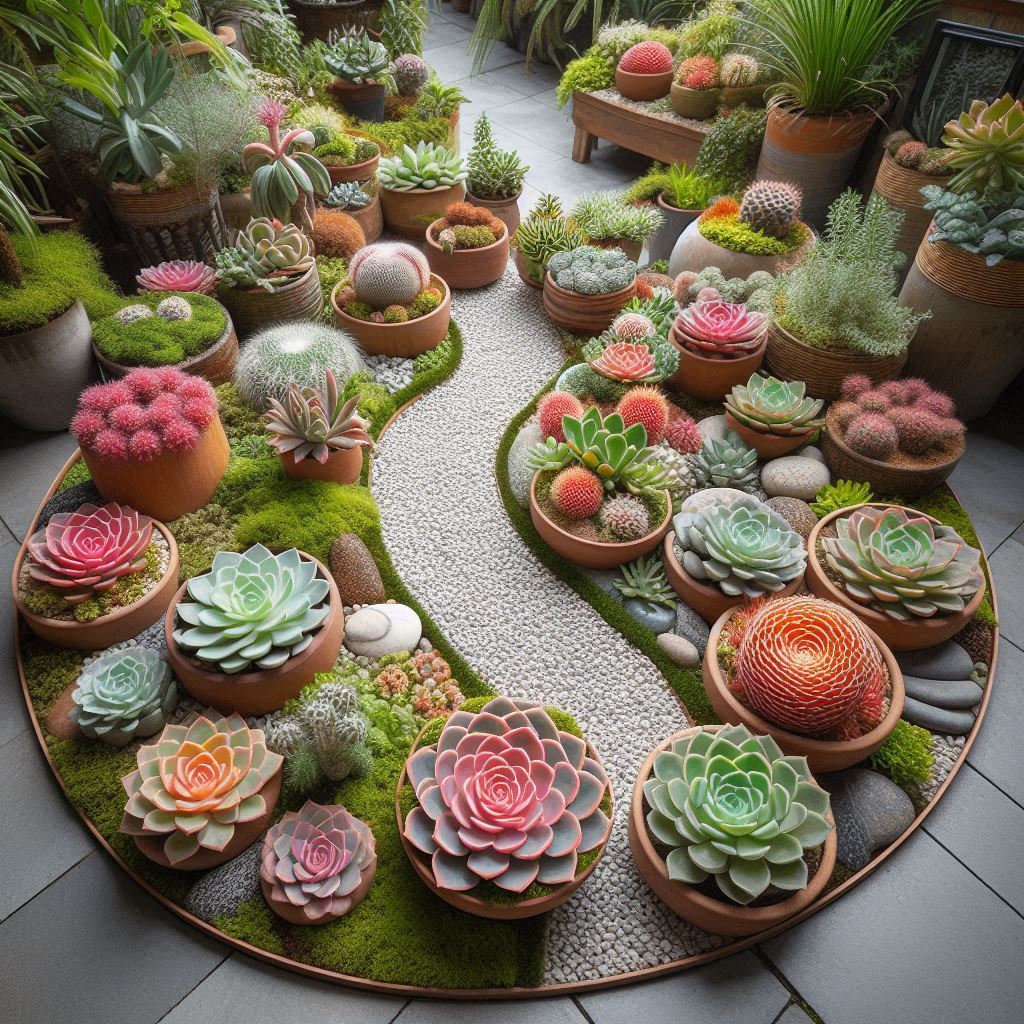
This captivating succulent lives up to its name with its vibrant coral-like appearance. Corpuscularia lehmania features clusters of tiny, fleshy leaves that range from orange to red, depending on the amount of sunlight it receives. This succulent thrives in full sun and well-draining soil.
- Design Ideas: Living coral’s vibrant color makes it a standout in container arrangements. Pair it with succulents boasting contrasting textures, like smooth echeveria or fuzzy crassula, for a visually stimulating display. Alternatively, plant living coral alongside other red or orange succulents like kalanchoe blossfeldiana for a fiery color explosion.
16. Othonna Capensis (Little Pickles):
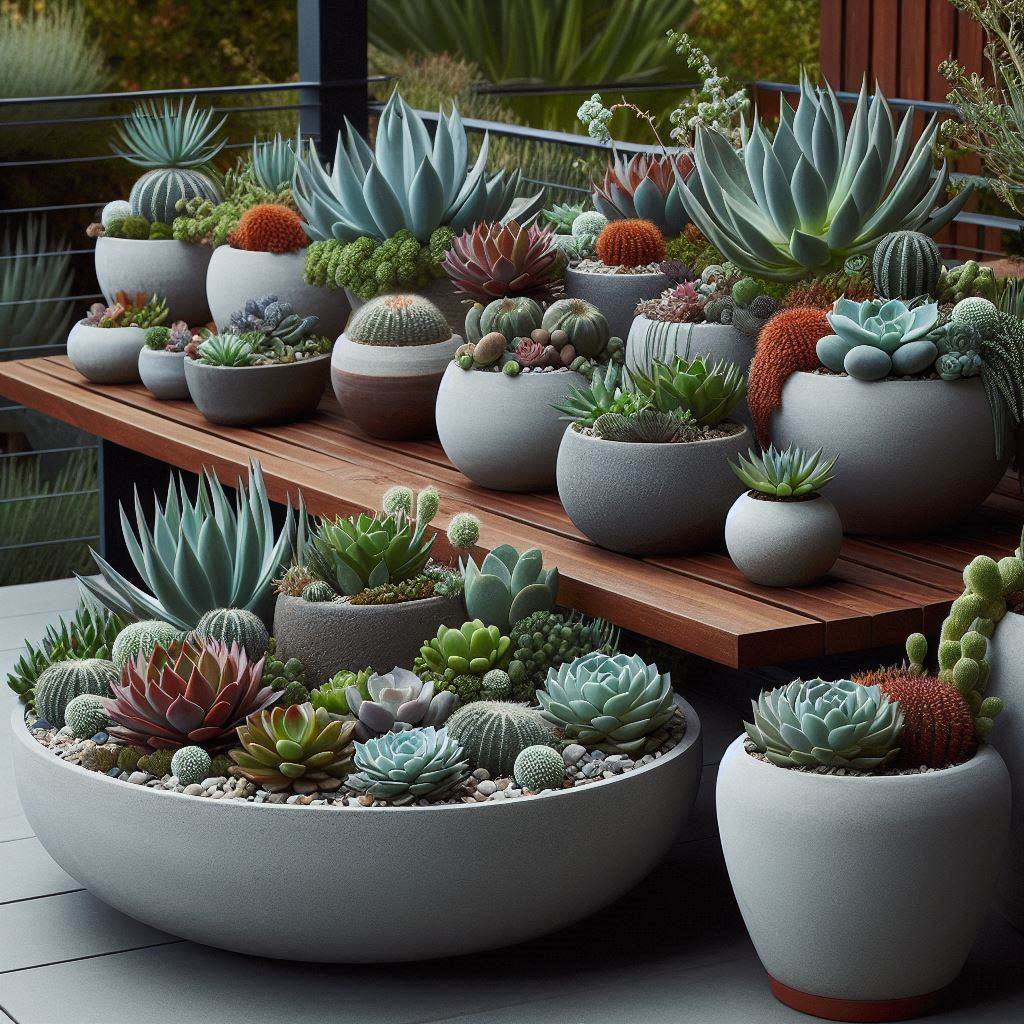
This whimsical succulent features long, stringy stems adorned with tiny, teardrop-shaped leaves that resemble miniature pickles. Little pickles thrive in full sun to partial shade and well-draining soil.
- Design Ideas: Little pickles’ cascading form makes them ideal for hanging baskets or elevated planters. Their unique foliage adds a playful touch to any arrangement. Combine them with other trailing succulents like string of pearls or burro’s tail for a whimsical, cascading display. Little pickles can also be planted in containers alongside upright succulents for a dynamic contrast in growth habits.
17. Gasteria (Living Leather):
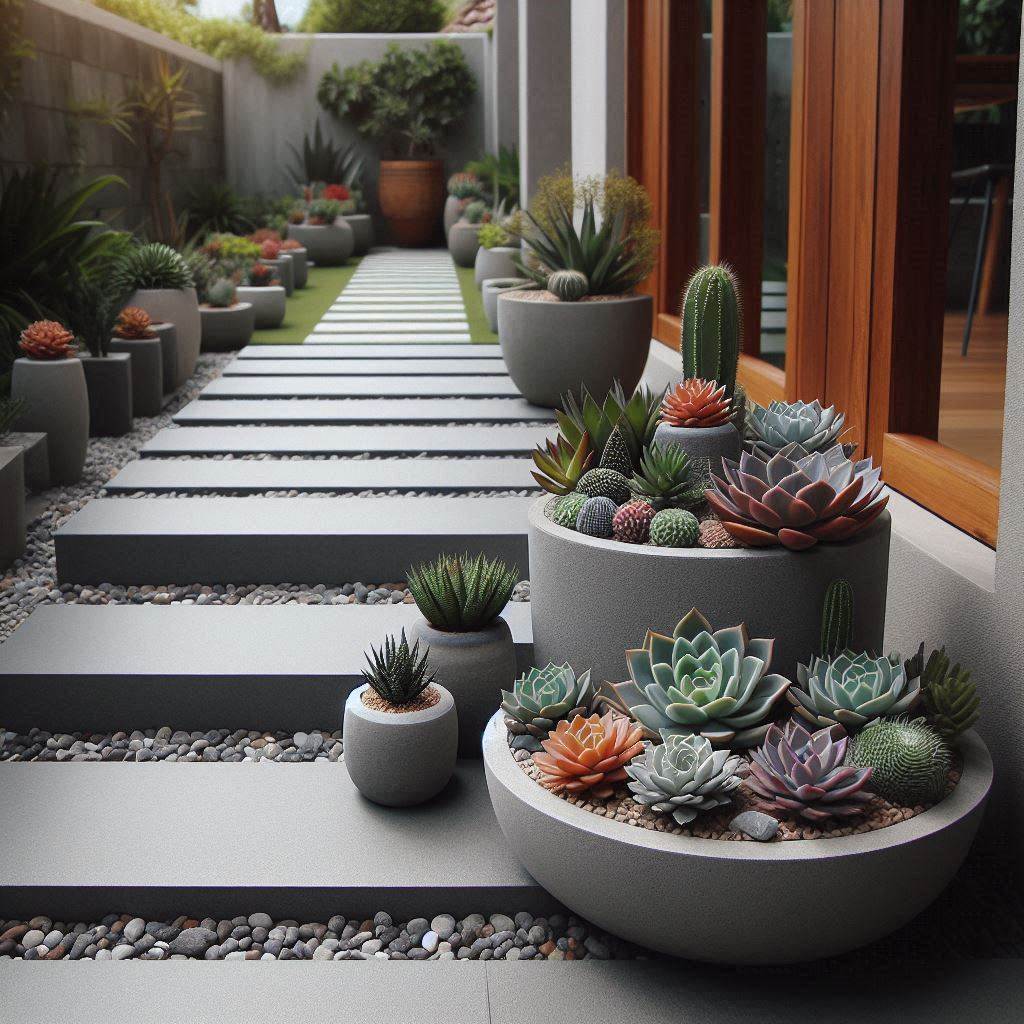
This low-growing succulent boasts thick, fleshy leaves with a bumpy, textured surface. Gasteria comes in various shades of green with white or reddish markings. They thrive in partial shade and well-draining soil.
- Design Ideas: Living leather’s unique texture makes them a conversation starter in container gardens. Plant them alongside other textured succulents like fuzzy echeveria or zebra haworthia for a visually captivating display. Gasteria can also be used as an accent plant in a container filled with primarily smooth succulents, adding a touch of visual intrigue.
18. Senecio Mandraliscae (String of Dolphins):
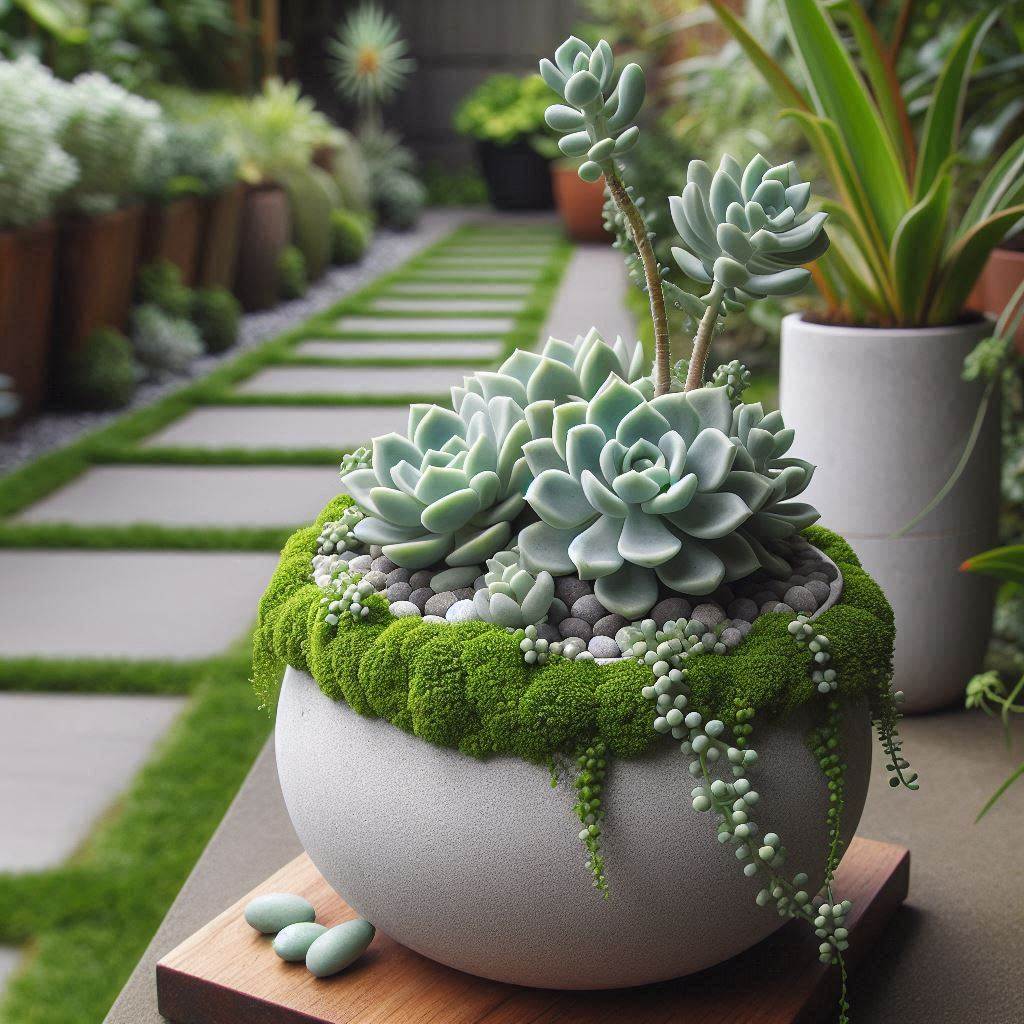
This captivating succulent features plump, teardrop-shaped leaves that resemble leaping dolphins. String of dolphins thrives in bright, indirect sunlight and well-draining soil.
- Design Ideas: String of dolphins’ unique foliage adds a whimsical touch to container arrangements. Similar to the string of pearls and string of bananas, they shine in hanging baskets or elevated planters. Combine them with trailing succulents like burro’s tail or ceropegia woodii for a lush, cascading display. String of dolphins can also be planted alongside upright succulents for a dynamic contrast in textures and growth habits.
Additional Tips for Creating Drought-Tolerant Container Gardens
- Choosing the Right Container: Select a container with drainage holes to prevent waterlogging, which can be fatal to succulents. Clay or terracotta pots are popular choices as they allow for good air circulation and evaporation. However, plastic containers can also work as long as they have drainage holes. Consider the size and weight of your mature succulents when choosing a container.
- Selecting the Appropriate Potting Mix: Succulents require a well-draining potting mix to prevent root rot. Opt for a commercial cactus and succulent mix, or create your own by combining potting soil with perlite or sand for added drainage.
- Proper Watering Techniques: Water your succulent container gardens deeply when the soil feels completely dry to the touch. Avoid frequent shallow watering, as this encourages root rot. During the winter months, water even less frequently.
- Fertilizer Recommendations: Succulents generally don’t require frequent fertilization. A light application of a balanced fertilizer once a year during the growing season is sufficient.
- Seasonal Considerations: While most succulents can tolerate some cold weather, it’s best to protect them from frost. If you live in a cold climate, consider moving your container gardens indoors or to a sheltered location during the winter months.
Wrapping Up
Succulents are a fantastic choice for creating beautiful, low-maintenance container gardens. With their diverse shapes, colors, and textures, they offer endless design possibilities. Choose the right succulent varieties and follow these simple tips to create a drought-tolerant oasis that thrives with minimal effort.

